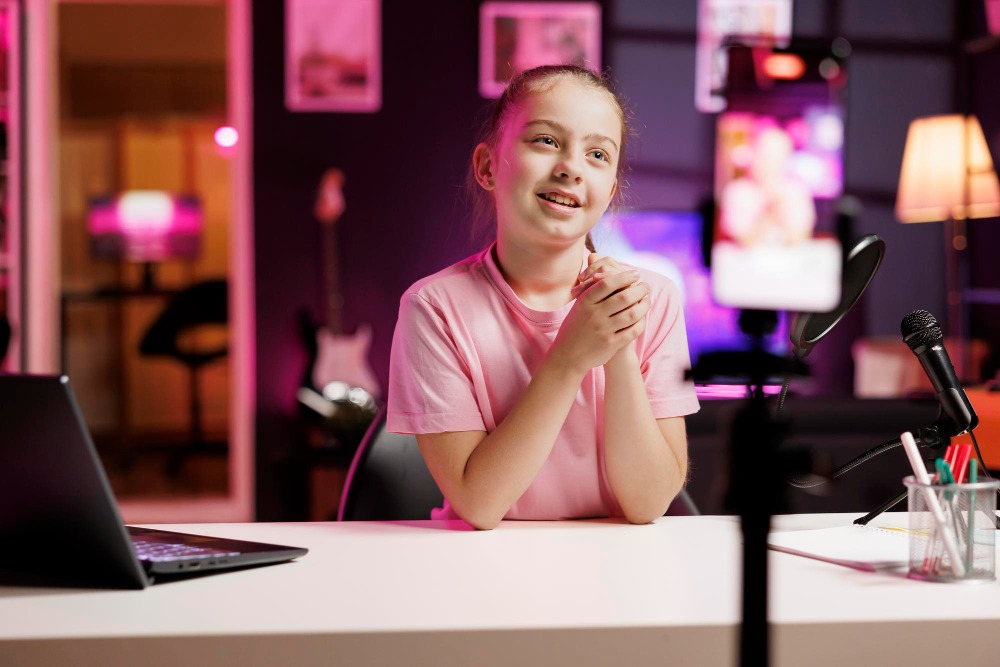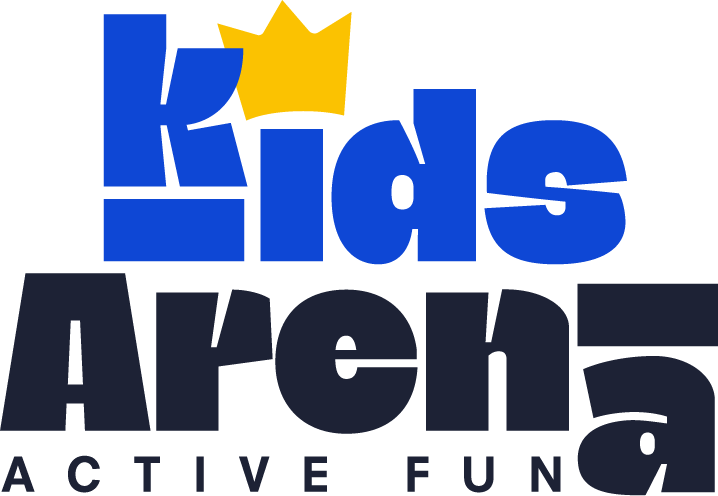Should You Let Your Kid Become a YouTuber? A Parent’s Safety Guide
Introduction: The New Career Aspiration
For today’s digital natives, becoming a YouTuber or content creator has become as common a career aspiration as traditional professions like doctor or teacher. While parents might initially dismiss this dream, the reality is that content creation can offer valuable learning opportunities when approached safely and thoughtfully.
The key question isn’t whether to completely forbid this interest, but how to guide children toward safe, age-appropriate content creation that builds skills while protecting their privacy and well-being.
Understanding the Appeal
Children are drawn to content creation for several compelling reasons that go beyond simple fame-seeking. Most young creators are motivated by genuine interests in storytelling, creativity, and sharing their passions with others.
Common Motivations Include: – Creative expression and artistic development – Sharing knowledge about hobbies or interests – Building confidence through positive feedback – Learning technical skills like video editing and production – Connecting with others who share similar interests

Kids Recording Video
Expert Perspectives on Child Content Creation
Devorah Heitner, author of “Growing Up in Public: Coming of Age in a Digital World,” emphasizes that the decision to allow content creation should be individualized for each family. “There are parents who get the creative side of things. When they see their kid making cool crafts, they get excited and support it,” she explains.
The focus should be on the creative and educational aspects rather than monetary gain. Most children aren’t primarily motivated by earning money but by the joy of creating and sharing their work.
Key Expert Recommendations: – Prioritize creativity and learning over monetization – Maintain strong parental oversight and involvement – Focus on skill development rather than fame – Ensure age-appropriate content and interactions
Real Family Success Stories
The Bolbat family demonstrates how content creation can evolve safely with proper guidance. Starting with simple videos edited on phones using iMovie, they gradually developed their skills and eventually partnered with professional services for growth and protection.
Their Safety Approach: – Never sharing personal information like addresses or license plates – Ignoring requests from followers to meet in person – Parents serving as intermediaries for all public communication – Professional partnerships for enhanced security and growth
This progression shows how families can start small and scale up while maintaining safety priorities.
Essential Safety Considerations
Privacy Protection
Personal Information Security: Teach children never to share identifying details like full names, addresses, school names, or specific locations. Even seemingly innocent details can be pieced together by malicious individuals.
Visual Privacy: Be mindful of what appears in the background of videos, including house numbers, mail, license plates, or school uniforms that could reveal location information.
Family Boundaries: Establish clear rules about which family members can appear in content and what topics are appropriate for public discussion.
Comment and Interaction Management
Parental Oversight: Parents should serve as the primary filter for all public comments and messages. Children shouldn’t directly engage with unknown followers.
Platform Protections: Utilize platform safety features like comment moderation, restricted mode, and privacy settings designed for younger users.
Negative Feedback Preparation: Discuss how to handle criticism and negative comments before they occur, emphasizing that online negativity reflects the commenter, not the creator.
Content Guidelines
Age-Appropriate Topics: Ensure all content aligns with family values and is suitable for the intended audience.
Educational Focus: Encourage content that teaches, entertains, or shares positive messages rather than purely attention-seeking material.
Consistency Standards: Maintain consistent quality and messaging that reflects well on your family’s values.

Age-Appropriate Implementation Strategies
Young Children (Ages 6-10)
Recommended Approach: Private family videos or very limited, heavily supervised sharing Focus Areas: – Learning basic video creation skills – Understanding the difference between private and public sharing – Developing storytelling and presentation abilities – Building confidence in a safe environment
Safety Measures: – No public platforms without direct adult supervision – Private family sharing only – Focus on skill development rather than audience building
Tweens (Ages 11-13)
Recommended Approach: Limited public sharing with comprehensive parental oversight Focus Areas: – Introduction to basic editing and production skills – Understanding digital citizenship and online etiquette – Learning about audience engagement and feedback – Developing personal brand awareness
Safety Measures: – Comments disabled or heavily moderated – All content pre-approved by parents – Limited personal information sharing – Regular discussions about online experiences
Teenagers (Ages 14-18)
Recommended Approach: Gradual independence with ongoing guidance and safety protocols Focus Areas: – Advanced content creation and editing skills – Understanding monetization and business aspects – Building professional online presence – Preparing for potential career development
Safety Measures: – Established safety protocols and emergency procedures – Regular check-ins about online experiences – Professional guidance for growth and protection – Clear boundaries around personal information sharing
Platform-Specific Considerations
YouTube
Age Requirements: YouTube requires users to be 13 or older, though younger children can use the platform under parental supervision through family accounts.
Safety Features: – YouTube Kids for younger viewers – Restricted Mode for filtering content – Comment moderation tools – Privacy settings for video visibility
TikTok
Age Requirements: TikTok requires users to be 13 or older, with additional restrictions for users under 16.
Safety Features: – Private account options – Comment filtering and blocking – Screen time management tools – Family pairing for parental oversight
Age Requirements: Instagram requires users to be 13 or older, with Teen Account features for enhanced protection.
Safety Features: – Private account settings – Comment filtering and restriction – Story sharing controls – Close friends features for limited sharing
Building Skills Through Content Creation
Technical Skills Development
Video Production: Learning camera work, lighting, and composition basics Editing Proficiency: Developing skills in video editing software and apps Audio Management: Understanding sound quality and music licensing Graphic Design: Creating thumbnails, titles, and visual elements
Communication Skills
Public Speaking: Building confidence in verbal communication Storytelling: Developing narrative structure and engagement techniques Writing: Creating scripts, descriptions, and social media content Audience Awareness: Understanding how to communicate with different demographics
Business and Life Skills
Project Management: Planning, executing, and completing creative projects Time Management: Balancing content creation with school and other responsibilities Critical Thinking: Analyzing feedback and making improvements Digital Citizenship: Understanding online responsibility and ethics
When Content Creation Isn’t Appropriate
Red Flags to Consider
Obsessive Behavior: If content creation becomes compulsive or interferes with school, sleep, or social relationships Inappropriate Content: If children gravitate toward age-inappropriate topics or dangerous challenges Privacy Violations: If children consistently ignore safety guidelines about personal information Negative Impact: If online experiences consistently cause stress, anxiety, or behavioral changes
Alternative Approaches
Private Creation: Encourage video creation for family and friends only Educational Focus: Channel creative energy into school projects or structured programs Offline Alternatives: Explore traditional creative outlets like theater, writing, or art Delayed Introduction: Wait until children demonstrate greater maturity and understanding

Professional Support and Resources
Educational Programs
Many communities offer youth media programs that teach content creation skills in supervised, educational environments. These programs often provide: – Professional instruction in video production – Safe, controlled environments for learning – Peer collaboration opportunities – Adult mentorship and guidance
Professional Services
For families serious about content creation, professional services can provide: – Content strategy and planning – Safety and privacy protection – Technical support and equipment guidance – Legal and business advice for monetization
Making the Decision for Your Family
Assessment Questions
Child Readiness: Does your child demonstrate maturity in handling feedback, following rules, and understanding consequences?
Family Resources: Do you have the time and knowledge to provide appropriate oversight and support?
Safety Comfort: Are you comfortable with the privacy and safety implications of public content sharing?
Educational Value: Will content creation support your child’s learning and development goals?
Trial Approaches
Private Testing: Start with private family sharing to assess interest and skill development Limited Experiments: Try short-term, heavily supervised public sharing to gauge the experience Educational Programs: Enroll in structured youth media programs before independent creation Gradual Expansion: Slowly increase independence as children demonstrate responsibility
Conclusion: Balancing Creativity and Safety
The decision to allow children to become content creators shouldn’t be made lightly, but it also shouldn’t be automatically dismissed. With proper guidance, safety measures, and realistic expectations, content creation can provide valuable learning opportunities and creative outlets for young people.
The key is maintaining a balance between supporting children’s creative interests and protecting their safety and privacy. This requires ongoing communication, clear boundaries, and willingness to adjust approaches as children grow and demonstrate increasing responsibility.
Remember that every family’s situation is different, and what works for one child may not be appropriate for another. The goal should be supporting healthy development while respecting individual interests and family values.
Most importantly, content creation should enhance rather than replace other important childhood activities like education, physical play, and in-person social relationships. When approached thoughtfully, it can be a positive addition to a well-rounded childhood experience.
About Kids Arena
Kids Arena provides families with expert guidance on digital parenting, online safety, and supporting children’s creative development in digital environments. Our evidence-based resources help parents make informed decisions about technology use while fostering healthy child development. Visit www.kidsarena.es for more digital parenting resources and safety guides.



